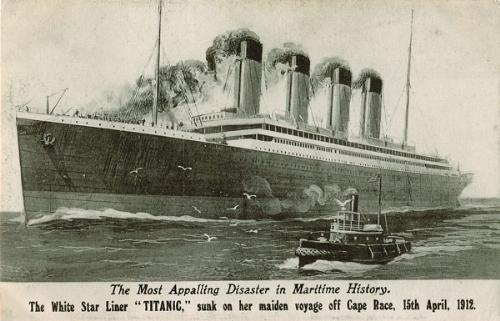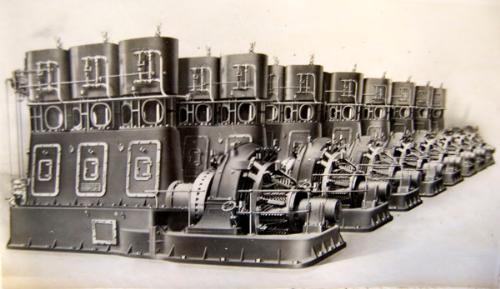Bedfordshire Connections with Titanic

The centenary of the sinking of the Titanic on the night of 14-15th April 1912, has resulted in another surge of interest in what is probably the world's most famous maritime disaster. Acres of print and thousands of websites are devoted to all the aspects of the tragedy. As we shall see later on this article, it is sometimes difficult, without access to the original sources, to separate fact from fiction as far as the doomed liner is concerned.
The most prominent connection Bedfordshire has with the ship is through the engineering firm, W.H. Allen and Sons Ltd. In 1909 Harland and Wolff of Belfast ordered eight sets of 400KW generators driving Allen dynamos for the new White Star liners the Olympic and the Titanic. The Allen archive here contains a photograph of a letter from John Pirrie, the Chairman of Harland and Wolff, placing the order, worth £20,000, that November.

There is also a photograph of the completed generators (ref: AQ6/12/5). From this, we know that Allens made much of the machinery for the electrical installation aboard the Titanic. Famously, the ship's lights remained illuminated until just before she foundered.

Late in 1998, when interest in James Cameron's film Titanic was at its height, there was a letter in the Daily Mail from a woman who claimed that her father, a prize pupil at W.H. Allens, should have been a passenger on the fateful voyage. She wrote: 'At the last minute his ticket was cancelled because the chairman's son was going instead – and that poor boy drowned'. It was a dramatic story, but was it true? Fortunately, the company archives reveal the prosaic truth: the youngster was indeed a prize apprentice, but his reward was a clock. Moreover, none of the Allen family sons died in the disaster. We know that Rupert Allen was at Southampton on the night before the ship sailed, and allegedly dined with Mr Thomas Andrews, designer of the Titanic, the night before the voyage, but he only planned to travel on board if there were any electrical problems. Luckily for him, there were none.
Another local myth is that Arthur Harry Adams, founder of the Adams Manufacturing Company (later Igranic) at Bedford in 1906 went to America in 1912 to raise capital for his company but was lost on the Titanic. In fact, he died when the Lusitania was torpedoed in 1915.
Local newspapers report that few Bedfordshire people were involved in the sinking. The only local person who drowned, as far as we know, was Cecil Jackson, who was born in Eaton Bray in 1890 and who appears on the crew list as an 'assistant boots steward'. There is more information on him here.
Annie Robinson, who was born at Bedford, was a stewardess on the Titanic. She survived, only to commit suicide in 1914. The New York Times of 11th October takes up the story:
'Boston: 10th October. Mrs. Annie Robinson of Liverpool, a survivor of the Titanic disaster, jumped from the Leyland Line steamer Devonian last night while the liner was groping through a heavy fog. Officers of the vessel, which arrived today, said that Mrs. Robinson had been in a high state of excitement because of the fog and the sounding of the fog horn.' There is information about her on-line and the transcript of her interview to the British enquiry.
We know from local newspapers that Mrs Bowerman Chibnall and her daughter Elsie, of Box End, Kempston, were on board, but as female passengers in first class they survived. Norman Craig, K.C., MP for the Isle of Thanet, and son of Dr. Craig of Ashburnham Road, Bedford, had a narrow escape. He booked a ticket, then changed his mind and went on a golfing holiday in Scotland instead. He failed to inform his family and friends of his change of plan, and they initially thought that he had perished when his name appeared on a list of the drowned.
A search of the Luton News failed to find anyone from the town who was on board the Titanic. However, the press coverage shows that both Bedford and Luton Borough Councils helped arrange charity events to raise money for the Lord Mayor's Relief Fund, and that several hundred pounds was raised in this way.
The publication of some original sources on-line has made is easier to dispel the myths surrounding the Titanic, but continued fascination with the fate of the liner means that the mixture of fact and fiction will continue as long as the story endures.
We are grateful for the assistance of Pam Stibbings of Central Beds Library Service who has highlighted some of the websites giving details of local people involved in the disaster. Many of the original documents relating to the Titanic and the British Board of Enquiry are held by the National Archives. Nigel Lutt